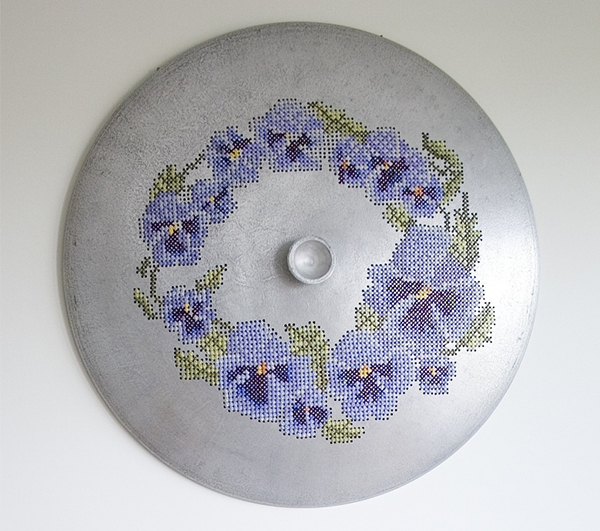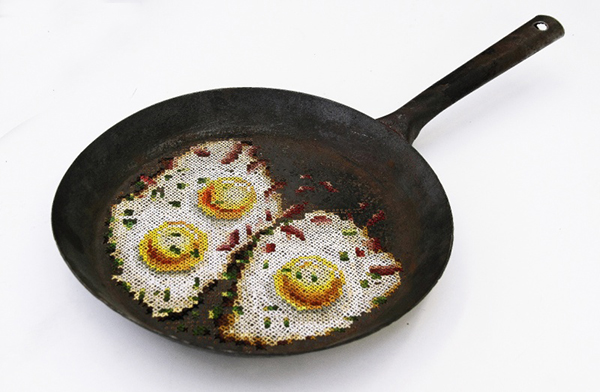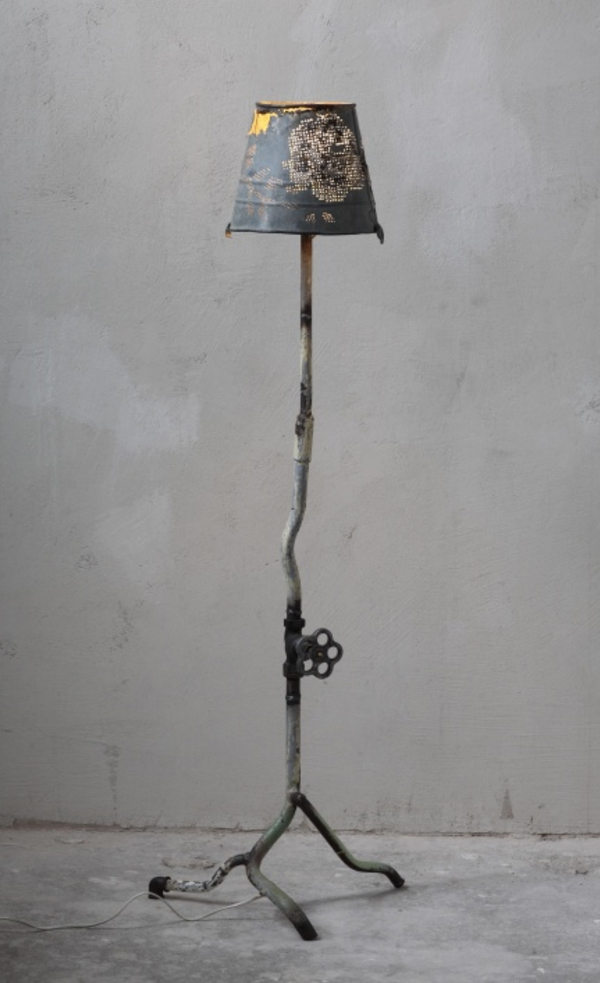Embroidery seems to be having a moment. Not only is there a plethora of contemporary cross stitch kits appearing on Etsy (depicting anything from ‘more gin please’ to llamas), there’s now a new wave of crafters learning to embroider their own jeans and jackets.
In addition, kitschy florals were a key motif on the Spring/Summer 2017 catwalk. Check out the handicrafts feel of the embroidered Scottish roses seen on black leather dresses and jackets at the SS17 Alexander McQueen shows.
In this post however, we look at an award-winning artist who also happens to be turning traditional ideas of textile embroidery completely on its head.
These beautiful cross stitched metal artworks are by Severija Inčirauskaitė-Kriaunevičienė. As well as being a textile teacher at the Vilnius Academy of Arts, Severija is a prominent Lithuanian artist, famed for applying cross stitch embroidery to domestic and everyday objects.
Life is Beautiful (2005)
According to an essay by Dr. Jurgita Ludavičienė, cross stitch was a technique employed by women in the post-war period, to embroider household items such as tablecloths. In the Soviet times, it was frequently used to decorate cushions and napkins. On its current reputation, she says:
Embroidery hasn’t lost its popularity today – there are specialised magazines for women to draw inspiration for their picture patterns. It has always been and still is a manifestation of a desire to adorn the household, which usually takes the form of perfectly kitschy objects. The latter have become Severija’s source of inspiration for quite a long creative period. Cross stitch embroidery has evolved into a mania of sorts, hence the artist’s extraordinarily intensive activity. Yet, instead of fabrics, she chose to embroider metal and similar materials.
Severija has applied her signature cross stitching technique to metal buckets, rusty spades, kitchenware and even car doors, by first drilling holes into the objects. Many of the floral embellishments reference the traditional textiles of the post-war era. She also adorns objects with more playful kitsch designs, such as the fried eggs stitched onto an old frying pan, as seen in Morning Trio (2014) pictured above.
Although Severija’s works can be described as beautiful in the decorative sense, they are very much art objects that tell a story, usually with an ironic message behind them. As some of her floral cross-stitch patterns derive from modern day women’s hobby magazines, she deliberately cites popular culture, playing with our understanding of low and high art, as well as the relationship between art and design. Pictured above, ‘Light Bucket Challenge’ (2010)
‘A Path Strewn with Roses’ was a series from 2007 (pictured below) which drew attention to Lithuania being statistically the worst country for fatal accidents on the road that year. She embroidered thirteen cars and even used parts taken from crash sites in her work. These works were displayed in Banksy’s Dismaland theme park in 2015.
In an interview with Don’t Panic, the artist says:
Utilitarian objects lose their function and become art objects, which tell us different stories about our lives. Personally, I don’t like extraordinary situations – I like everyday life. People often think that a situation like a wedding or exotic travels etc are the most important in their lives. I think the opposite, I think that everyday life is more important because it unites all our lives.
Love Severija’s work? Find out more about the artist’s story in the video below:
Photo credits from top: 1st: ‘Between City and Country’ (2008). Photo by Modestas Ežerskis | 2nd: Alexander McQueen SS17 via WWD Japan | 3rd: Photo by Gabriel Mackevičius | 4th: ‘Every Stick Has Two Ends’ (2012). Photo by Modestas Ežerskis | 5th via Severija | 5th- 9th: Photos by Modestas Ežerskis













